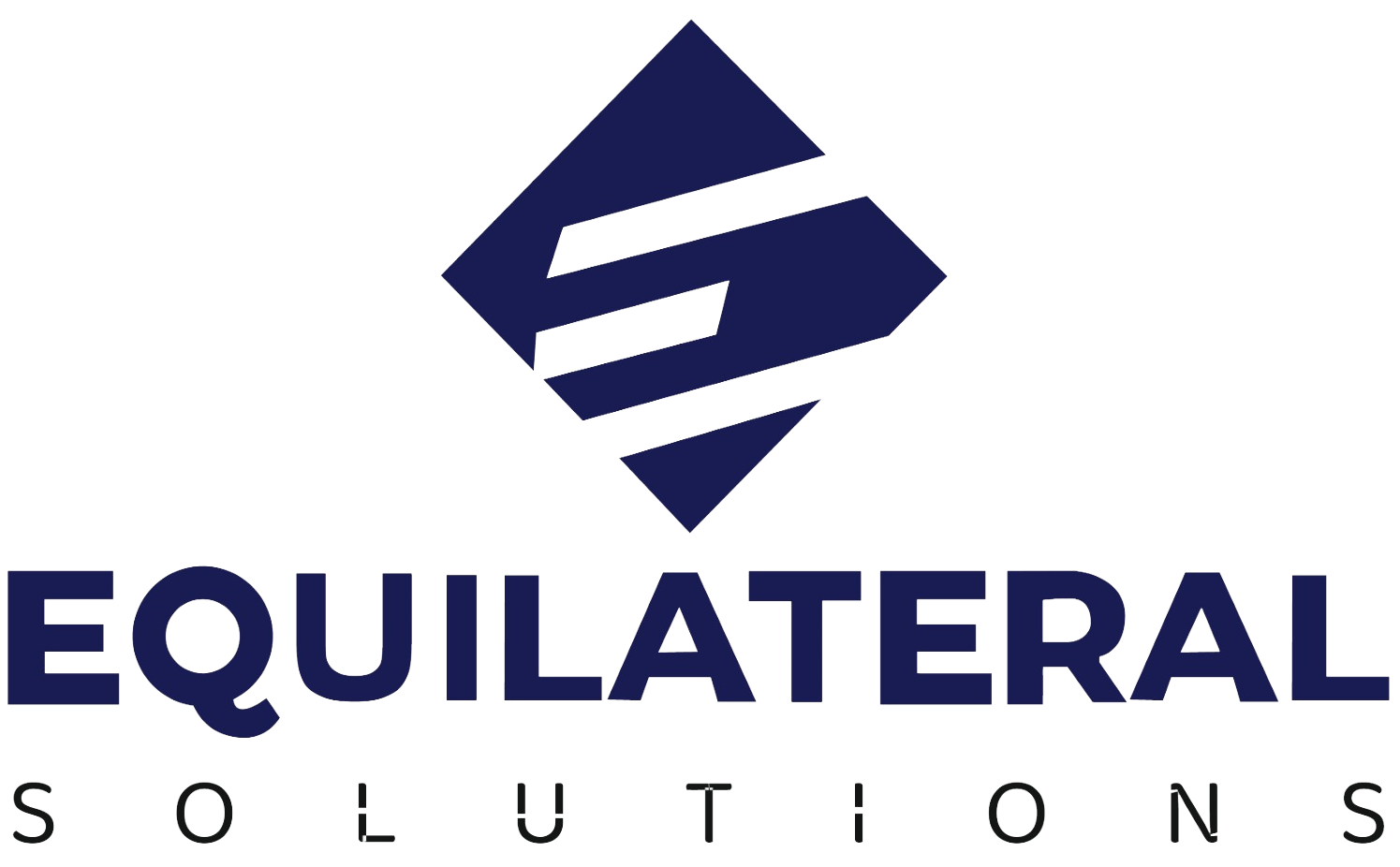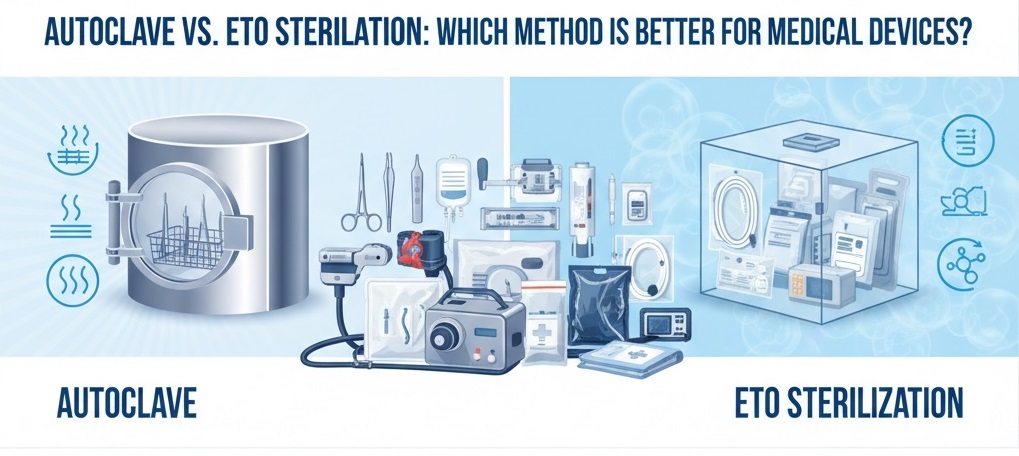Introduction – Why Sterilization Method Matters for Modern Medical Devices
If you’re confused between autoclave vs ETO sterilization for your medical devices, you’re not alone. Hospitals, CSSD units, and medical manufacturers face this same problem daily. Choosing the wrong sterilization method can damage devices, increase failure rates, and compromise patient safety. But choosing the right one ensures product integrity and long-term performance.
Modern medical devices are becoming more complex and heat-sensitive. That’s why selecting the correct sterilization method is now more important than ever.
What Is an Autoclave? (Steam Sterilization Equipment Explained)
An autoclave is a steam-based sterilization chamber that uses saturated steam and pressure to destroy microorganisms.
How Steam Sterilization Works
Where Autoclaves Are Used
- Hospitals
- Microbiology labs
- Pharmaceutical industries
- Dental clinics
- Research and diagnostic facilities
Types of Autoclaves (Equilateral Solutions Product Line)
Horizontal Cylindrical Autoclave
- Ideal for routine sterilization
- Widely used in hospitals and labs
- Suitable for medium-sized loads
Horizontal Rectangular Autoclave
- Designed for large, bulk loads
- Best for pharma and industrial applications
- Higher chamber efficiency with large instrument trays
What Is ETO Sterilization? (Ethylene Oxide Sterilization Explained)
ETO full form: Ethylene Oxide
ETO sterilization is a low-temperature sterilization method designed for heat-sensitive and moisture-sensitive devices.
Typical ETO Operating Conditions
- Temperature: 37°C–60°C
- Longer cycle time due to aeration
- High penetration capability into lumens and sealed packaging
How Ethylene Oxide Works
Ethylene oxide gas easily penetrates plastic, polymer layers, and long lumens. It can sterilize items even when they are sealed, making it ideal for single-use disposable devices.
Difference Between Autoclave and Sterilizer (Important Clarification)
Many users ask: “Is an autoclave the same as a sterilizer?”
The answer is no.
- Autoclave = A device that sterilizes using steam and pressure
- Sterilizer = Any equipment that sterilizes using physical or chemical methods
Types of Sterilizers
- Steam autoclave
- ETO sterilizer
- Hot air oven
- Plasma sterilizer
Autoclave vs ETO Sterilization: Key Differences
| Factor | Autoclave (Steam) | ETO Sterilization |
| Temperature | 121–134°C | 37–60°C |
| Moisture | High | None |
| Material Compatibility | Metals only | Plastics, electronics, polymers |
| Penetration | Limited | Excellent (lumens) |
| Packaging | Requires unwrapped loads | Sterilizes pre-packed loads |
| Cycle Time | Fast | Slow but thorough |
| Industrial Use | Limited | Ideal for complex, bulk devices |
Autoclave Temperature vs ETO Temperature — Why It Matters
High autoclave temperatures (121–134°C) can damage sensitive devices.
Why High Temperature Is a Problem
- Plastics may melt
- Sensors and electronics may fail
- Polymer components may deform
ETO solves these issues because it works at 37–60°C, making it safe for new-generation medical devices.
Material Compatibility — Where Autoclave Fails & ETO Excels
Materials Not Suitable for Autoclave
- Plastic consumables
- Catheters
- IV sets
- Medical tubing
- Electronic devices
- Pre-assembled kits
- Polymer-based devices
Materials Perfect for ETO Sterilization
ETO is ideal because it penetrates deep and does not damage sensitive surfaces.
Equilateral Solutions manufactures ETO machines designed specifically for these applications.
Difference Between Sterilization and Disinfection
Many professionals confuse these terms. Here is the simplest explanation:
Disinfection
- Reduces microorganisms
- Does NOT kill all spores
Sterilization
- Eliminates ALL microorganisms and spores
- Required for medical devices that enter the human body
Medical devices must be sterilized, not just disinfected.
Autoclave Advantages
Why Autoclave Is Still Useful
- Fast cycle time
- No chemicals involved
- Cost-effective
- Ideal for metal tools
- Easy to operate and maintain
ETO Sterilization Advantages (Why Manufacturers Prefer It)
Key Benefits of ETO
- Works safely at low temperatures
- High penetration in long lumens
- Sterilizes sealed packaging
- Suitable for complex, multi-layered devices
- Complies with ISO 11135 standards
Equilateral Solutions supports manufacturers with validated, compliant ETO machines.
Limitations of Autoclave vs Limitations of ETO
Autoclave Limitations
- Cannot sterilize plastics
- Moisture can damage electronics
- Requires unwrapped loading
- Limited penetration
ETO Limitations
- Longer cycle time
- Requires aeration
- Higher operational costs
- Safety and monitoring needed
This balanced view helps facilities choose the right technology.
When Should You Use Autoclave?
Best Applications
- Surgical metal instruments
- Stainless steel tools
- Glassware
- Laboratory media
- Reusable hospital equipment
When Should You Use ETO Sterilization?
ETO Is Best For
- Complex disposable devices
- Electronics and sensors
- Plastic syringes
- Catheters
- IV sets
- Tubing sets
- Export-oriented packaging
This is the perfect point to consider Equilateral Solutions ETO sterilizers for industrial applications.
Autoclave vs ETO: Which Method Is Better for Medical Devices?
Final Conclusion
- For simple metal tools → Autoclave
- For heat and moisture-sensitive devices → ETO
- For bulk, industrial sterilization → ETO
- Best practice → Use both depending on the device type
Why Choose Equilateral Solutions?
Equilateral Solutions offers high-quality, ISO-compliant sterilization systems designed for hospitals, medical manufacturers, and pharma industries.
Our Key Offerings
- ETO Sterilization Machines
- Horizontal Steam Sterilizers (Cylindrical & Rectangular)
- ISO 11135 & ISO 13485 compliant systems
- Chamber capacities: 55L to 135L
- Gas leak detection systems
- IQ/OQ/PQ validation support
- AMC & remote diagnostics
Looking for an ISO-Compliant ETO or Autoclave Sterilization System?
Contact Equilateral Solutions today for customized sterilization solutions tailored to your medical devices.
Both methods are effective, but the choice depends on the device. Autoclave is best for metal and heat-resistant tools, while ETO is ideal for plastic, polymer, and heat-sensitive devices. Modern manufacturers prefer ETO for complex instruments.
Yes, autoclaves use high heat and moisture, which can melt or deform plastic and polymer-based devices. Items like IV sets, catheters, and tubing often get damaged. For these materials, ETO sterilization is safer.
ETO requires gas exposure, penetration, and aeration, which increases total cycle time. This slow process ensures deep sterilization even inside long lumens and sealed packs. It is more thorough for complex devices.
Yes, when done using ISO 11135-compliant ETO machines. Modern systems ensure proper aeration to remove residual gas and meet safety standards. This makes ETO completely safe for patient-use devices.
No, autoclaves require direct steam contact, which sealed packages block. As a result, the sterilization becomes incomplete. ETO can easily sterilize sealed and pre-packed items.
Manufacturers choose ETO because it works at low temperatures and penetrates complex device structures. It protects plastics, electronics, and multi-layered materials. This makes it ideal for modern medical devices.
Plastic, rubber, electronics, and polymer devices should not be autoclaved. High heat and moisture can damage or melt them. ETO is the better option for these items.
Yes, autoclave remains the best choice for metal tools, stainless-steel instruments, and glassware. It is fast, chemical-free, and cost-effective. Hospitals widely use it for routine sterilization.
Yes, ETO works extremely well for large batches of disposable and pre-packed medical devices. It can sterilize complex materials without damage. That’s why many OEM manufacturers rely on ETO systems.
Autoclave uses high-temperature steam, while ETO uses low-temperature gas. This makes autoclave suitable for metals and ETO suitable for heat-sensitive materials. The temperature difference is the main deciding factor.

